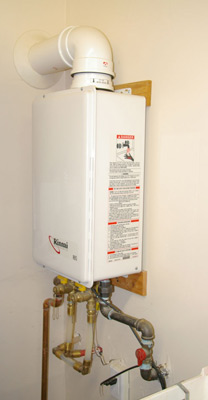 Eco tips for saving money this winter. What works well in the winter, can also save you money on your cooling bills in the summer too!
Eco tips for saving money this winter. What works well in the winter, can also save you money on your cooling bills in the summer too!
The Little Stuff:
- Seal up cracks – Common spots for drafts are entryways (the back door and garage doors are notorious for draftiness) window moldings and seals. Caulking windows, sealing cracks and installing weather strips under doors will help seal out drafts accounting for big losses of heat.
*Be sure to add lots of indoor toxin removing plants to keep indoor VOC levels and off-gassing furniture emissions to a minimum. - Insulate your attic – Cold air sinks, and if your attic isn’t insulated, it’s dropping down on you like an invisible fog. Get some insulation up there pronto! When choosing insulation materials, choose something with a high ‘R-value’ and try and stay away from anything with formaldehyde. It shouldn’t be any more expensive, but it will be much better for your health and indoor air quality.
- Insulate your windows – Break out the heavy curtains! Blinds and shades can also do their part in insulating you from the chilly outdoors. When the sun goes down, close your curtains or draw the shade to keep the warm air in and the cold air out. Be sure to open them first thing in the morning to get that rising sun.
- Insulate your water heater – Unless its a newer Energy Star water heater, most water heaters can benefit from an insulation blanket. Try and cover the first 6 feet of the hot pipes as well for an added benefit.
- Adjust the thermostat – I know it’s difficult at first, but each degree set below 68°F (20°C) during colder weather uses 3 to 5 percent less heating energy than each degree set above 68°F. A programmable thermostat can change the temperature automatically for when you are commonly gone or bundled up in bed saving you from heating an empty house.
- Change your air filter – Often overlooked or performed once at the beginning of winter, you should change your furnace filter once a month during heavy usage to keep everything flowing nicely.

The Big Stuff:
- Add a storm door – A benefit of up to 2 percent savings on your annual energy costs can be had by adding a storm door. They provide extra insulation from the elements, but be sure not to install exterior glass storm doors where they would receive direct sunlight. Exterior storm doors can trap heat, which can damage the entry door.
- Replace your windows – If you don’t have double or triple pane windows by now, you really should. Double pane windows can lower your energy bills by up to 15 percent. Be sure to look for windows with the Energy Star label as they will meet strict energy-efficiency guidelines set by the U.S. government. You may also want to consider storm windows which cost less and can be almost as efficient as double-pane windows.
- Upgrade to a tankless water heater – Tankless water heaters are about 10 to 30 percent more energy efficient than traditional water heaters which constantly have to keep water warm. Tankless models heat water on demand in the pipe providing an endless supply of hot water, and can save space.
- Replace your old washing machine – A front-load washer will cut your water and washer-related energy use by more than half over a top-load washer. You only need about 10 to 20 gallons (40 to 80 liters) of water to do a full load, while a top-load washer would have required about 40 gallons (150 liters). Try washing with cold water to save more money and extend your clothes colors and fabric life.

With all those energy saving tips in place, kick back and watch your energy bill drop. If you want to drop your utility bills even more, check out some of these tips to consider for the future.
Future Planning:
- Plant trees – Trees, while not only providing fresh oxygen, habitat, greenery and removing pollutants, are also good for home energy. Deciduous trees work especially well in providing cooling shade and reducing the heat soak effect of pavement in the summertime; while allowing the sun to warm your home in the winter. Plus you can install a rope swing, and who doesn’t like a rope swing?
- Use native plants for landscaping – Native plants are best adapted for the conditions of your area meaning you won’t have to take care of them in the winter time, and they will require less water in the summer time. They will also do better at holding together soil and preventing erosion.
Comments 4
Thank you for posting this, it’s a good reminder and a checklist for what I haven’t done yet. Really enjoyed stopping by your blog.
this is a timely blog now that we are currently feeling the minor effects of global warming lets act now and do are share to help the environment where is the better place to start at our homes
Pingback: Lose Weight While Lowering Energy Costs | The Chic Ecologist
Pingback: Cheap DIY Energy Saving Tips | The Chic Ecologist